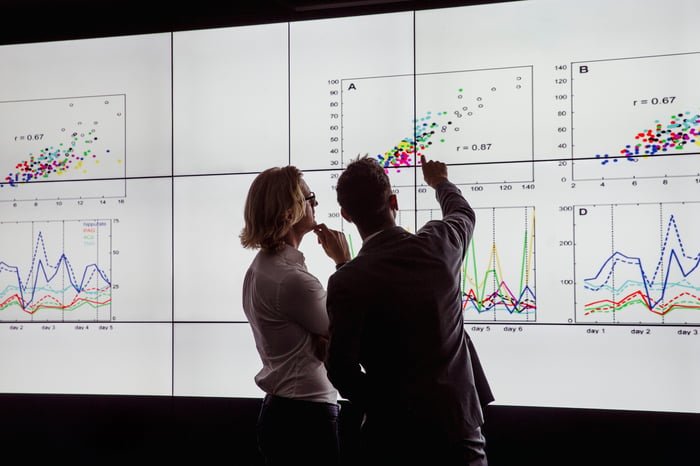In a future war, the US military might not be able to rely on traditional supply chains. Instead of flying or sailing in replacement parts, it may be forced to build them on the spot, wherever its forces happen to be — on land, at sea, or on remote islands.
Enter FLEETWERX, a project rethinking how the US military sustains its forces. Backed by DEFENSEWERX and the Naval Postgraduate School, it’s working with industry partners and the US military on new ways to test and build critical parts.
The work being done incorporates 3D printing technologies, artificial intelligence, augmented reality, and other emerging tech into solving key problems and overcoming logistics issues.
In early May, FLEETWERX and its partners conducted an event testing how field-ready machines that can make or fix parts anywhere perform under real-world stress.
Take the stainless steel printing process, for example. Stainless steel is a vital material for building and repairing vessels. Having it readily available is key, but the logistics are less than ideal.
“That type of technology traditionally takes a lot of argon gas, so you have these big, giant green bottles that you’re trying to transport all over the Pacific Ocean,” FLEETWERX’s Lt. Col. Michael Radigan with the Marine Corps, told Business Insider.
“It’s very expensive, and there are lots of points where you may not be able to get that gas,” he said.
FLEETWERX/Davies Public Affairs
A solution was a mobile nitrogen generator, an isolated unit inside of a 10-foot container that could power a steel printer. That removes the logistics challenge.
“I can put it on a ship. I can put in on a forward island,” Radigan said. “I can do all of those things and I’ve cut my logistics train down dramatically.”
FLEETWERX’s process typically starts at the top, with a commander or leader coming with a problem: a specific part or material is needed, and there are challenges with how to build it or get it where it needs to go. Drawings and plans are quickly made, and then it’s 3D-printed in plastic for what’s called a form, fit, and function test, basically determining if the product is the right size and will do what it’s supposed to do.
Building the technology and making sure that the process is streamlined, is just one aspect of the work being done. The real focus is on understanding how it performs in an actual conflict and gets where it needs to be.
FLEETWERX/Davies Public Affairs
The aim is to deploy these manufacturing machines into the field, where they can produce parts on demand and deliver them using autonomous platforms like drones.
Radigan said that the advantage of using uncrewed systems is that a crewed aircraft isn’t wasting time and resources flying parts that could be carried by a drone. The Navy has been experimenting with this concept as part of its BlueWater Maritime Logistics UAS program to reduce the logistics demand on crewed aircraft and pilots.
Radigan compared the idea to Amazon Prime’s Phoenix drone delivery system. He said “that’s the scale and speed that we need to be focusing on, but in a defense-related application.”
At last year’s Rim of the Pacific exercise, students from the Navy, Marine Corps, Army, and FLEETWERX researched how additive manufacturing equipment like 3D printing worked at sea and on land.
Submarine repair, and shipbuilding more generally, were important topics at the event. Those industrial bases have seen significant shrinkage in the decades since the Cold War, and goals of revitalizing them have become a top priority for military leaders, industry partners, and the Trump administration. The emphasis isn’t just the shipyards, though; there’s also the work in the field.
At the May testing event, FLEETWERX, teams from across the military, and five private sector companies were present. Some firms, like Firestorm Labs, are focused on modular autonomous systems. Other companies, like Dynovas, Craitor, and Phillips Federal, brought their manufacturing tools.
US Navy photo
Dynovas has a pod that can produce structural parts from metal, composites, or ceramics in under 72 hours, and Craitor has a deployable, man-portable system that can print on the move and in a range of temperatures and climates. Philips Federal has a containerized manufacturing system for building and repairing critical parts quickly.
And another partner, Overmatch, is working on an artificial intelligence adaptive training platform. That speaks to a major core element of this process, Radigan said, which is making sure that service members can learn how to use the machines to build what’s needed. That comes from training.
“You may be great in traditional manufacturing,” he said, “but I bring you one of these new machines and you’re like, ‘Well, shoot, where do I begin? I’ve got the manual here, but how do I get started?'”
Equipped with something like augmented reality goggles, a person could receive clear instructions on what steps to take, buttons to press, and how to use the machine. Largely, digitization of these and other processes is useful for building quickly and with much greater precision.
FLEETWERX/Davies Public Affairs
In a potential wartime environment in the Indo-Pacific region, for example, a service member may need to do repairs on a ship and work with a machine they haven’t touched before. That AR aspect helps lighten the load, Radigan added.
Related stories

Business Insider tells the innovative stories you want to know

Business Insider tells the innovative stories you want to know
The US Department of Defense has recognized over the past few years that it needs to adapt how it builds and gets materials and parts to forward-deployed forces. Part of that comes from concerns that future wars will occur in heavily contested environments, making logistics operations difficult. Recent national defense strategies have also touched on this concept.
In 2021, DoD released its first-ever Additive Manufacturing Strategy, which outlined how 3D printing and other technologies would be implemented into the larger force’s workflow, as well as the connections with the industrial base.
There have been widespread concerns in DoD and Washington about whether the US has the supply and logistics chains to maintain its forces and how those need to adapt to the complexities and speed of what future wars might look like.







